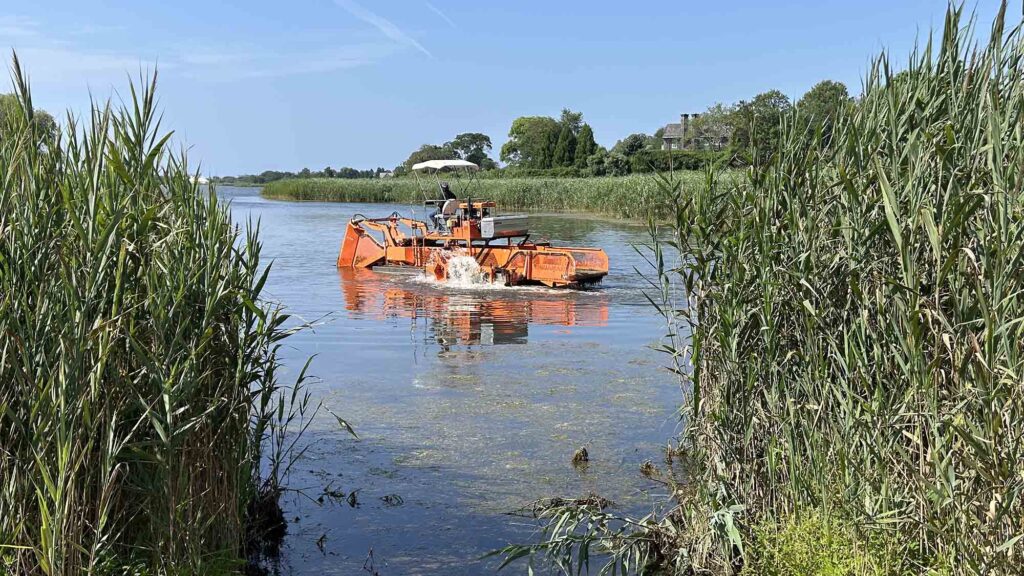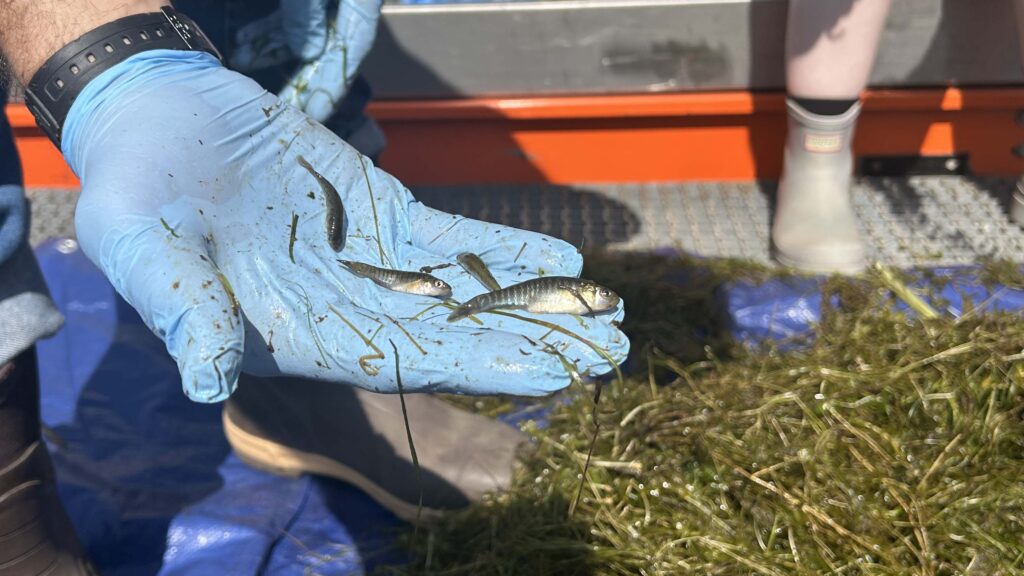
Our Aquatic Weed Harvester has been hard at work this summer, gliding across Georgica Pond under the August sun. While its primary mission is to remove invasive and overabundant aquatic plants — this month, mostly Sago Pondweed (Stuckenia pectinata, about 90% of the haul) and some Clasping Leaf Pondweed (Potamogeton perfoliatus) — it’s also acting as a research vessel.
Every load of vegetation is teeming with life. On August 12th, students from Stony Brook University came together to sort through the harvest and catalog what we call “bycatch” — the small aquatic creatures that live, feed, and hide among the pondweeds. What they found was a miniature snapshot of the pond’s ecosystem in motion:
| Species | Scientific Name | Count |
| Mummichog | Fundulus heteroclitus | 80 |
| Four-spined Sticklebeck | Apeltes quadracus | 5 |
| Rainwater Killifish | Lucania parva | 690 |
| Sheepshead Minnow | Cyprinodon variegatus | 80 |
| American Eel | Anguilla rostrata | 1 |
| Blue Crab | Callinectes sapidus | 5 |
| Damselfly/Dragonfly Larvae & Nymphs Order | Odonata | 50 |
| Grass Shrimp | Palaemonetes pugio | 10 |
Total organisms recorded: 921
Even a single haul tells a bigger ecological story:
- Rainwater Killifish dominated the catch last week — nearly three-quarters of all individuals counted. These small but hardy fish are important prey for larger species and birds.
- The presence of an American Eel, a species that migrates thousands of miles between freshwater and the Sargasso Sea, is a reminder of the pond’s role in global migration routes.
- Blue Crabs, common to bays and estuaries, also make their home here thanks to our tidal connection.
- The Odonata larvae (future dragonflies and damselflies) signal healthy insect life cycles, which benefit both water quality and bird populations.

Thanks to our dedicated sorting team — Kevin Shaffer, Aliyah Alston, Harrison Bohrer, and Juliana Hart — we’re learning more about the hidden community that lives among the weeds. Every pass of the harvester is not just removing excess vegetation — it’s revealing the biodiversity beneath the surface.
